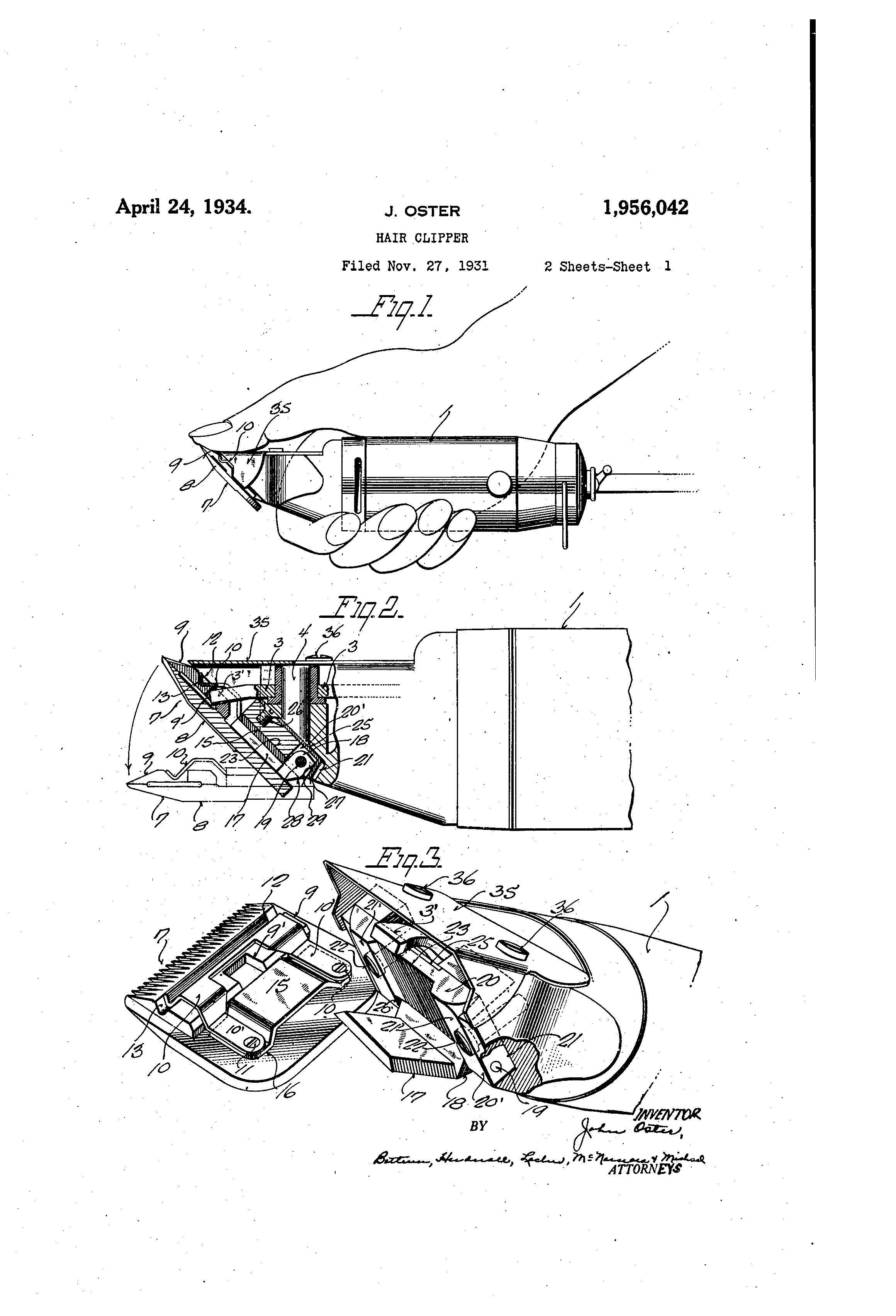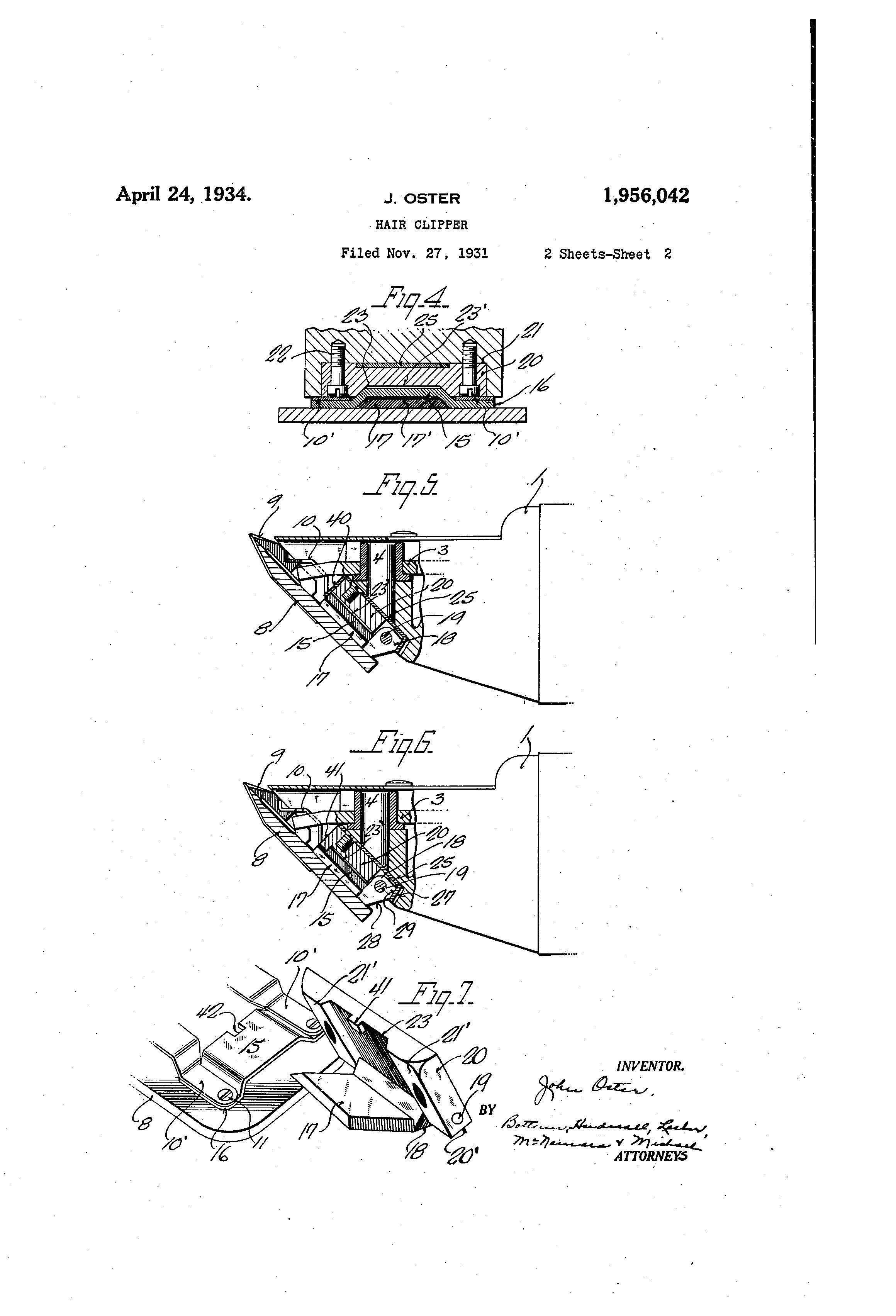Suiter Swantz IP takes a look back at past inventions and inventors with our Patent Of The Day.
On this day in 1934, John Oster was granted U.S. Patent No.1,956,042 for a HAIR CLIPPER.
This invention relates in general to hair clippers and more particularly to hair clippers of the type having unitary cutting assemblies, that is, assemblies of fixed and movable blades which may be readily attached to and detached from the main portion of the clipper.
One of the principal objects of the present invention is to provide a- hair clipper of this character wherein the cutter assembly is so organized with the other elements of the clipper that the cutter assembly may be readily and easily removed, cleaned, sterilized and replaced while the clipper is running or removed and replaced while the clipper is running. with another size, type or style of cutter assembly.
Another object of the invention is to provide a ‘ hair clipper having these advantages and capacities and which is simple and durable in construction, reliable and effective in operation and comparatively easy and inexpensive to manufacture.
In carrying out the present invention, as applied to a power clipper, the usual clipper body is provided which serves as a casing for the motor and driving instrumentalities and as a handle. The motor drives a vibrating. lever, the outer end of which interfits with and reciprocates the movable blades of the cutting assembly when the cutting assembly is operatively related to the body portion and to the lever or driving mechanism. The cutter assembly comprises a fixed blade, a movable blade and a combined tensioning and guide plate and in addition has one of the elements of the coupling means providing for the quick detachment of the assembly from the body of the clipper. This coupling means includes a socket-like structure on the cutting assembly and a swingable tongue on the body portion, the tongue being pivoted or hinged to the body portion and being releasably secured in either operative or inoperative position.
To remove the cutter assembly it is pressed forwardly and downwardly, this motion being provided by the swinging of the tongue about its hinge or pivot. As a result, the cutter assembly is moved from its operative position wherein its movable blade has a driving connection with the vibrating lever to its inoperative position wherein the driving connection is interrupted and wherein the tongue and socket of the coupling means are readily disconnected. Replacing the same or an other cutter assembly requires a reversal of the operation described.
The Oster® brand has been around since 1924 when John Oster saw the opportunity to market a hair clipper that was operated by hand. The clipper was originally made to cut and style women’s hair but four years later a motor was installed on it and the clippers became a huge success in the grooming industry. Oster decided to branch out from the grooming industry and purchased Stevens Electric Company in 1946. Stevens Electric Company introduced the first liquefier blender in 1923 and after the acquisition of the company Oster’s engineers worked to improve on that blender. Those improvements led to the Oster Blender which has been a household name for small appliances ever since.
Suiter Swantz IP is a full-service intellectual property law firm serving all of Nebraska, Iowa and South Dakota. If you have any intellectual property questions or need assistance with any patent, trademark or copyright matters and would like to speak to one of our patent attorneys please feel free to contact us.


